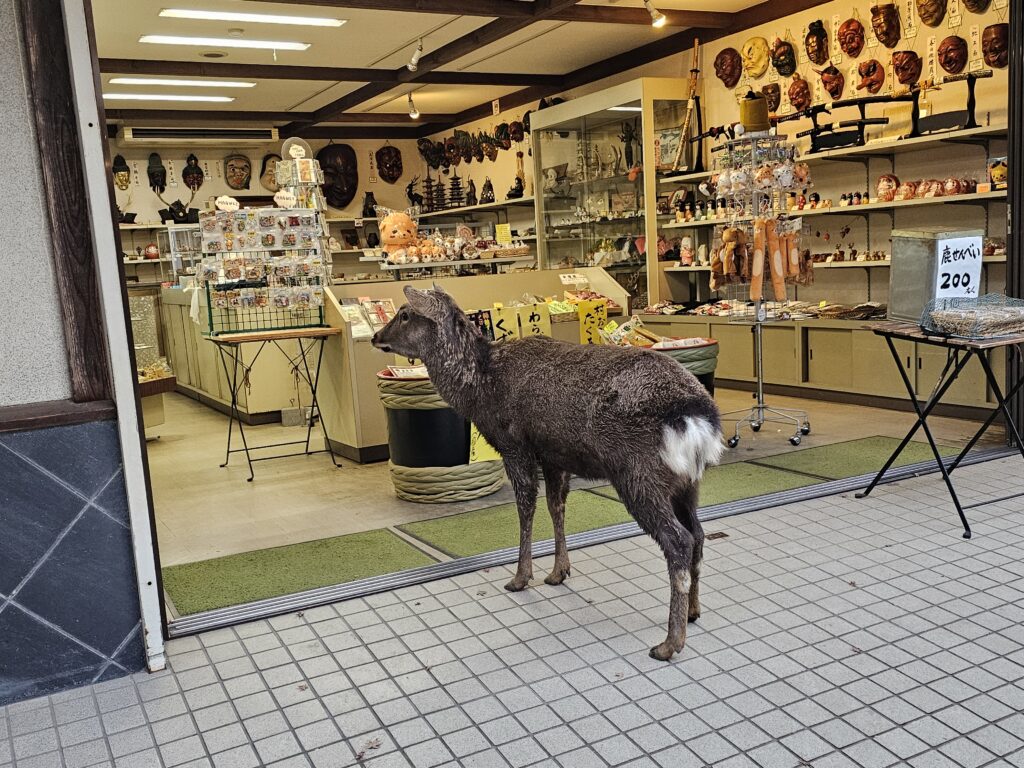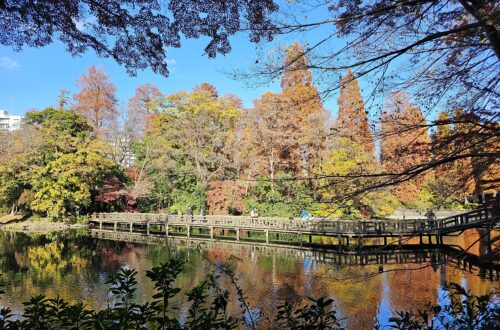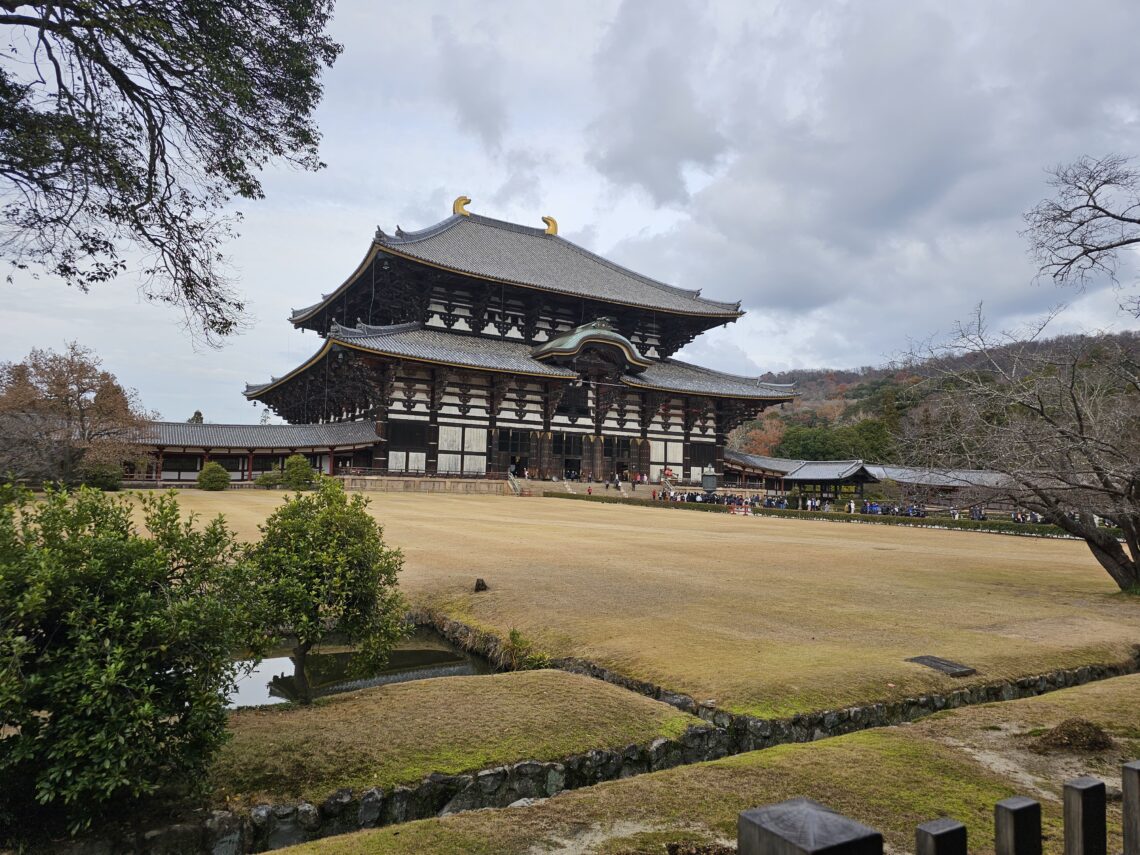
Thinking Of Doing A Day Trip to Nara From Kyoto or Osaka? Here’s Some Suggestions!
Table of Contents
When thinking of Nara, one instantly gets that mental image of family or a friend that has made the trip to Nara and taken a classic selfie with multiple deer that are seemingly everywhere in the Deer Park. We’ve all seen the photos and it’s one of Nara’s biggest draws for good reason.
It’s likely the biggest reason why you’re planning on visiting. I know that was the biggest reason why I wanted to visit.
While the deer of Nara certainly live up to the hype (yes, they’re as adorable in person as in your friends photos!), Nara does have much more to offer and see as well.
Nara is a very old city and was once Japan’s capital. It’s home to some of the country’s oldest and largest temples, including the famous Todaiji Temple, making a day trip to Nara a perfect opportunity to explore it’s many offerings.
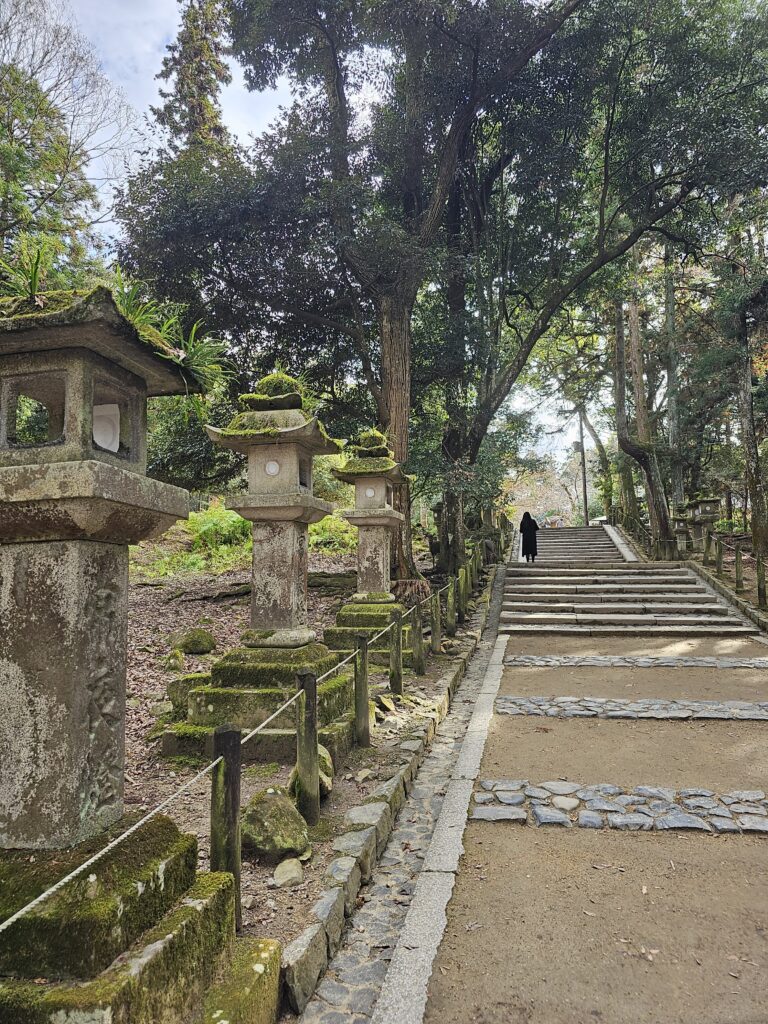
A Day Trip to Nara From Kyoto or Osaka
Nara is a very popular day trip from the neighboring Kyoto and Osaka. It’s a little less than an hr train ride from Kyoto (from Kyoto Station) and a little over an hour from Osaka as well (from Osaka Station).
The distance makes it a perfect day trip from either of the neighboring mega cities. Nara Station is also in a great location. You can walk directly from Nara Station to Sanjo Dori Street to all the major sites and Deer Park. It will definitely be a lot of walking but it’s certainly doable.
Sanjo Dori Street
When exiting Nara Station if you turn left and walk up the first major street you come across that will be Sanjo Dori Street. Most likely many people from Nara Station will be taking this route as well so you can just follow the crowd.
Walking down this street will take you directly into Nara Park which is where you can spend the whole day essentially. The street itself has many different souvenir shops and other stores and places to grab some food. With it being so close to Nara Station it’s a great place to stop off and get some souvenirs on your way back to the station at the end of the day,.
A very popular shop is Nakatanidou. Nakatanidou is famous for its live mochi making displays and its fresh mochi.


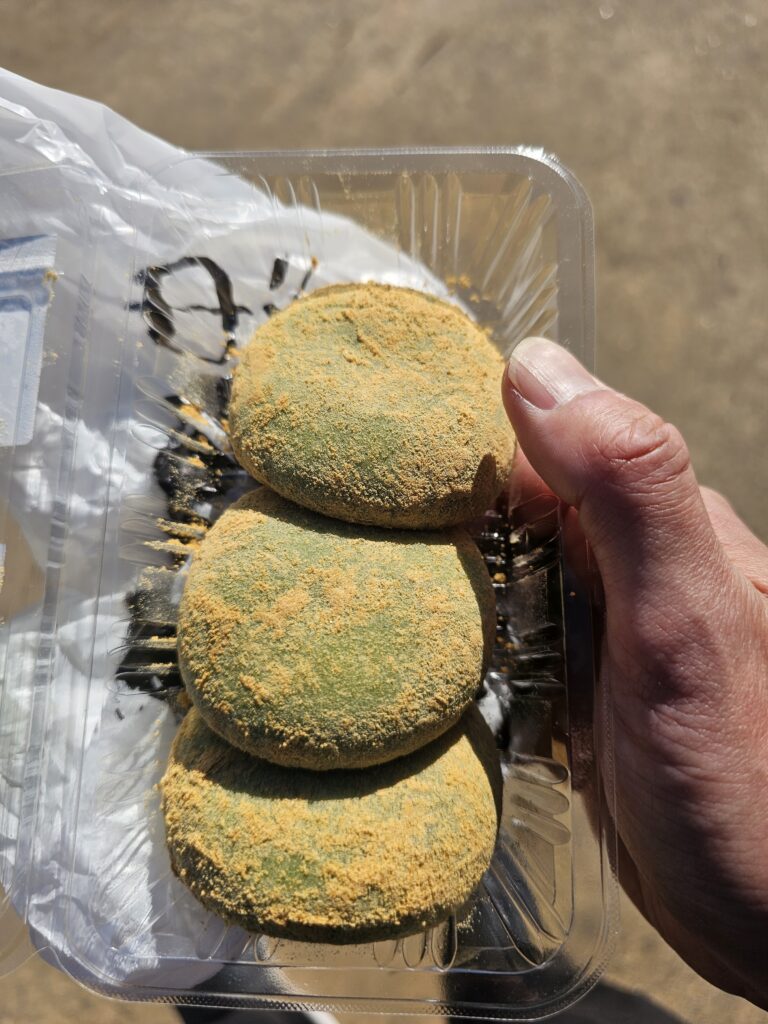
You can grab a three pack of these freshly made mochi for 540 yen, $3.81 USD. The mochi is unbelievably fresh. Soft, chewy, and filled with red bean paste, these are a perfect snack prior to entering Nara Park.
Nara Park
After enjoying some fresh mochi you can walk a little further down Sanjo Dori Street to enter Nara Park.
The park is massive, measuring over 660 hectares. This is where you’ll find all of the roaming deer and Nara’s most famous temples. Even devoting an entire day here you won’t be able to see everything, it’s just too large. But visiting all the main temples while enjoying the wild deer is certainly achievable during a day trip to Nara!
Kofukuji Temple Grounds
If entering the park through Sanjo Dori Street, Kofukuji Temple grounds is the first temple you’ll come across. There’s quite a few structures located here and the area is quite big. The five story pagoda – Kofuku-ji Gojunoto – is easily visible and towers over the other Kofukuji structures. The main temple is the Central Golden Hall.
The grounds are free to roam but The Central Golden Hall, the Eastern Golden Hall and Kofukuji’s National Treasure Museum require an entrance fee. I walked around a little bit but didn’t devote a ton of time here. If stretched for time a quick walk through with a few photos will suffice. You can always spend more time here on the way back from your day in the park as well!
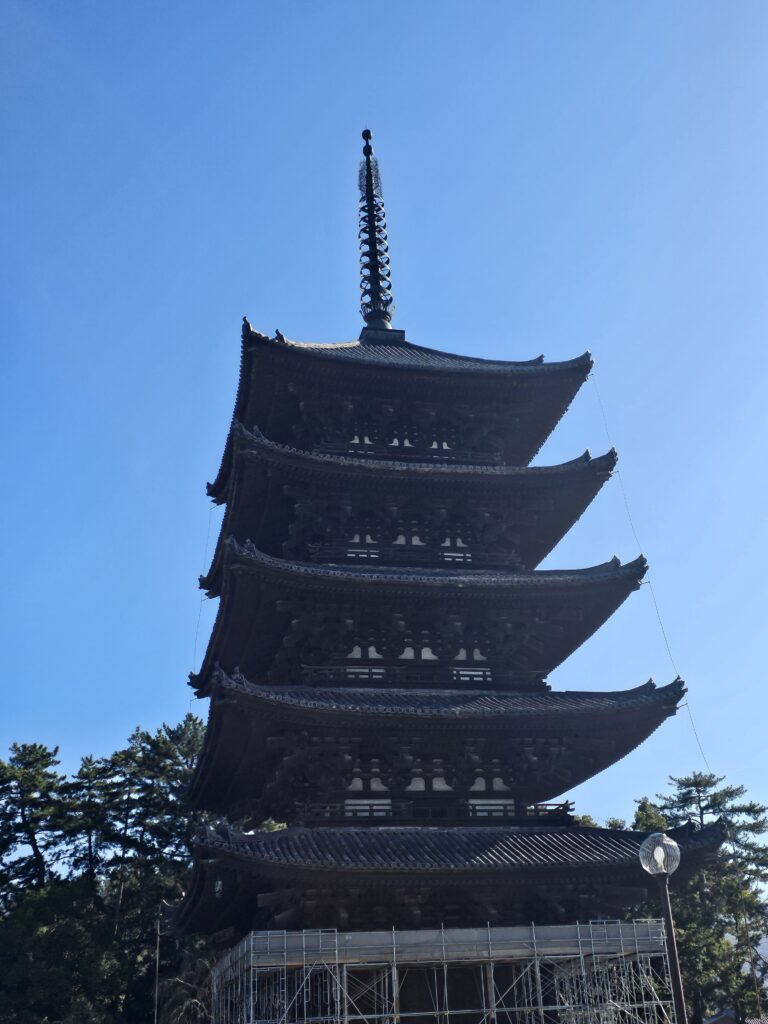
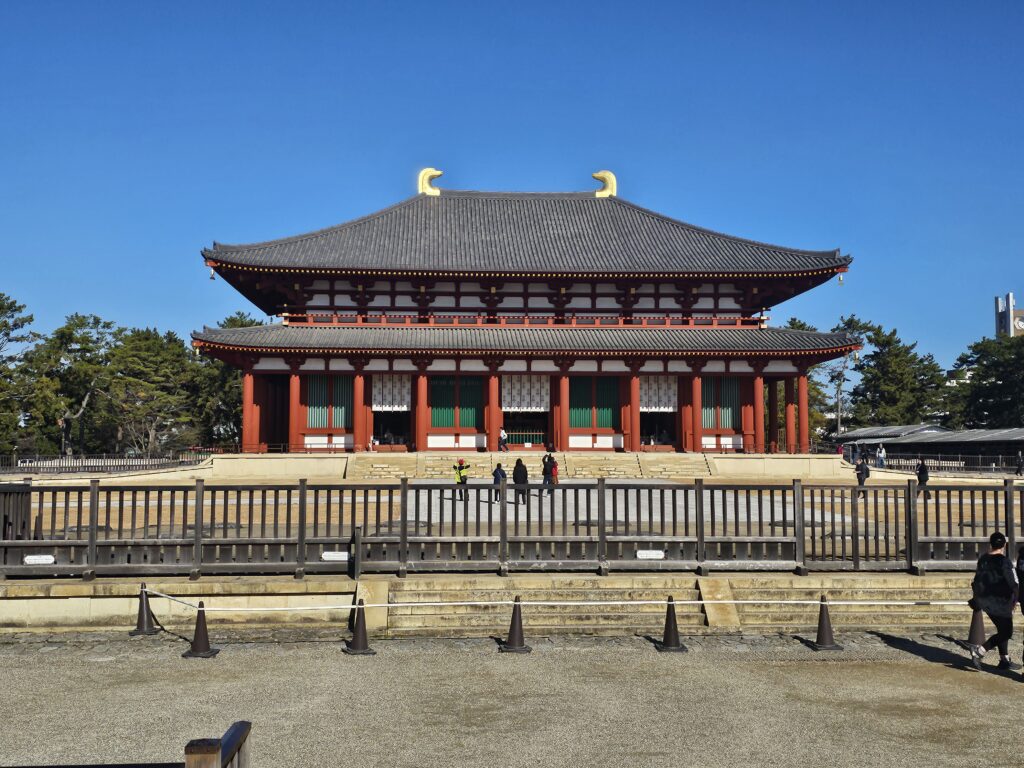
Inside Nara Park
Once you get deeper into the park, you realize just how large it is. It’s a huge wide open park with deer roaming everywhere. And the deer are EVERYWHERE. It’s easy to see these deer and think they’re domesticated, they are definitely well behaved.
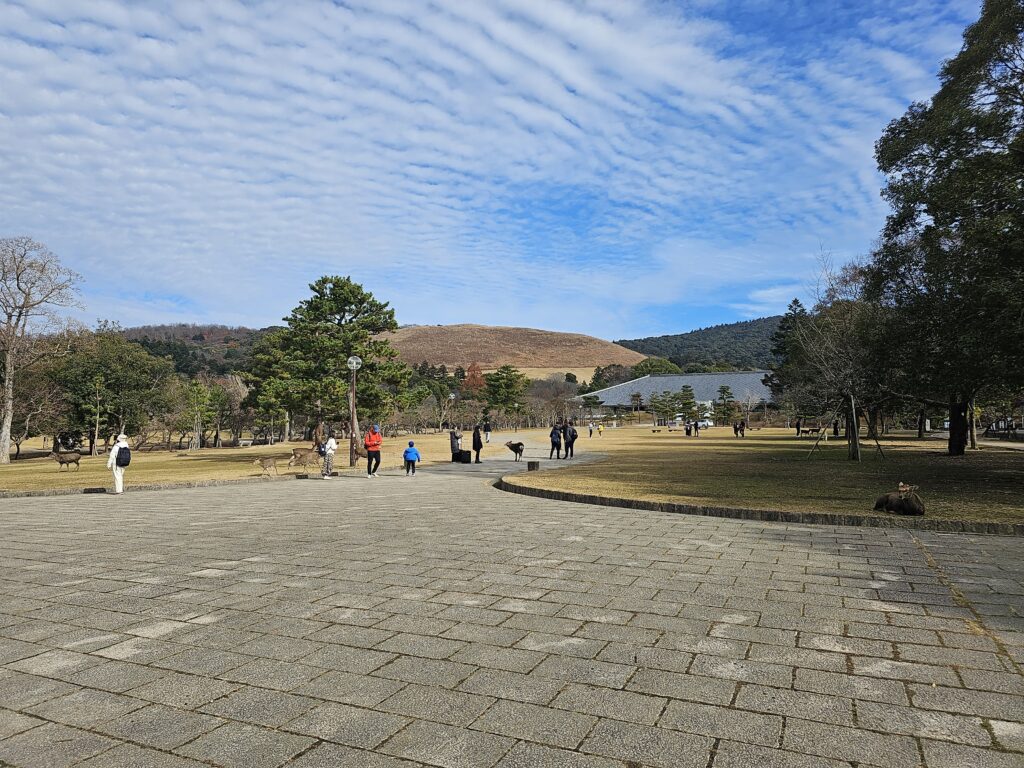
You’ll find clusters of deer chilling near entrances to the park, which is where you’ll find vendors selling rice cakes (200 yen, $1.27) that you can feed the deer. It’s important to keep in mind that they aren’t domesticated and to treat them as such. They will certainly start crowding you once they realize you have rice cakes so best get that camera ready!
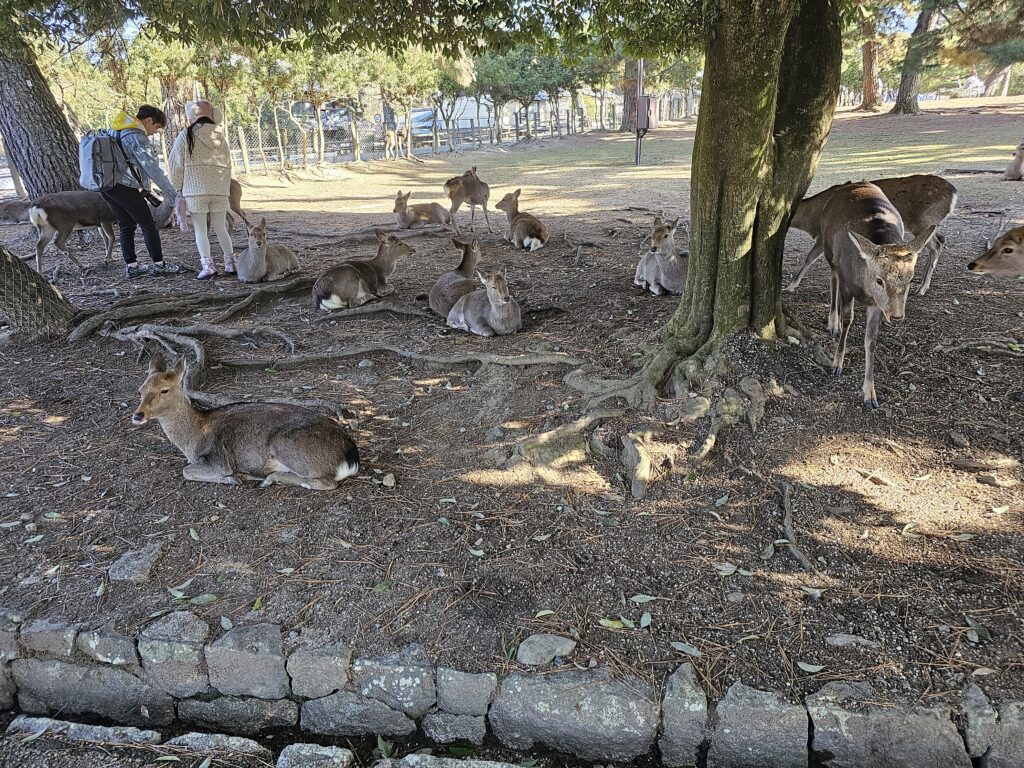
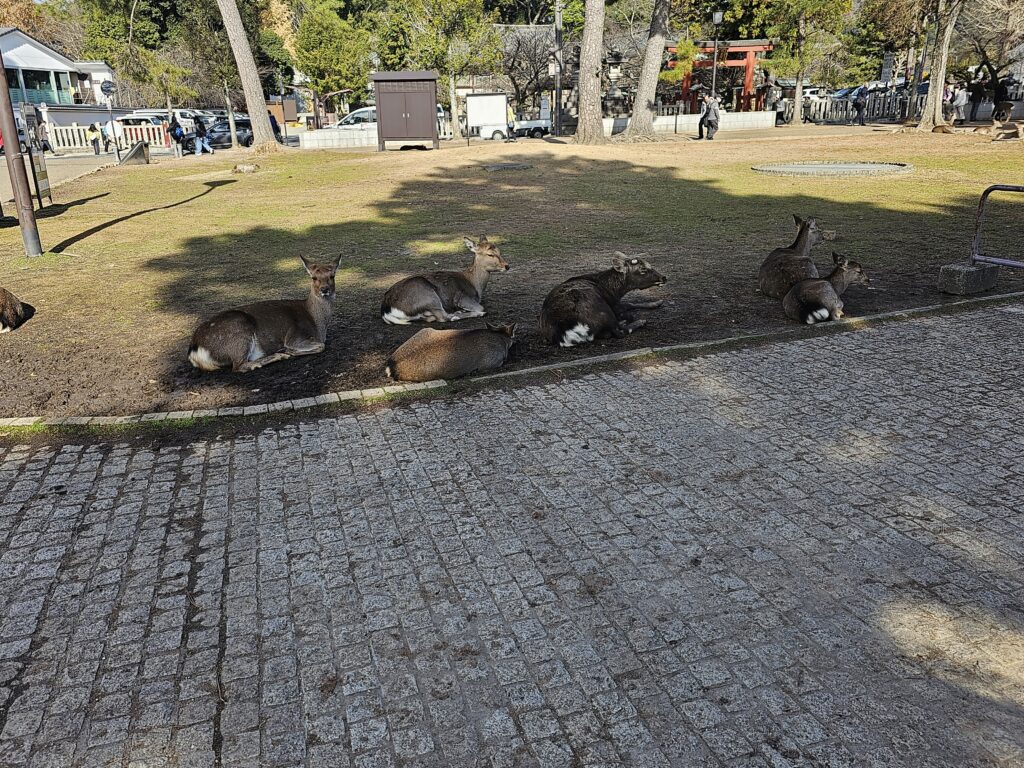
It’s definitely a fun experience to walk through the park with so many deer around. I thought they would be contained to one portion of the park but they are literally everywhere so it’s a truly unique experience.
Isuien Garden and Neiraku Museum
The Isuien Garden and Neiraku Museum are located near the Todai-Ji temple grounds and are about a 10-15 minute walk from the Kofukuji Temple Grounds. There’s an entrance fee for this (1200 yen, $7.63 USD). There are two traditional Japanese gardens located here and a small museum.
If you need a break from temples and deer this is a nice spot to bask in some peace and tranquility while appreciating the well-kempt gardens. I always love Japanese gardens due to how serene and beautiful they are and Isuien Garden certainly lives up to those traits. The garden and museum are both quite small so it will not take much time to walk through both.

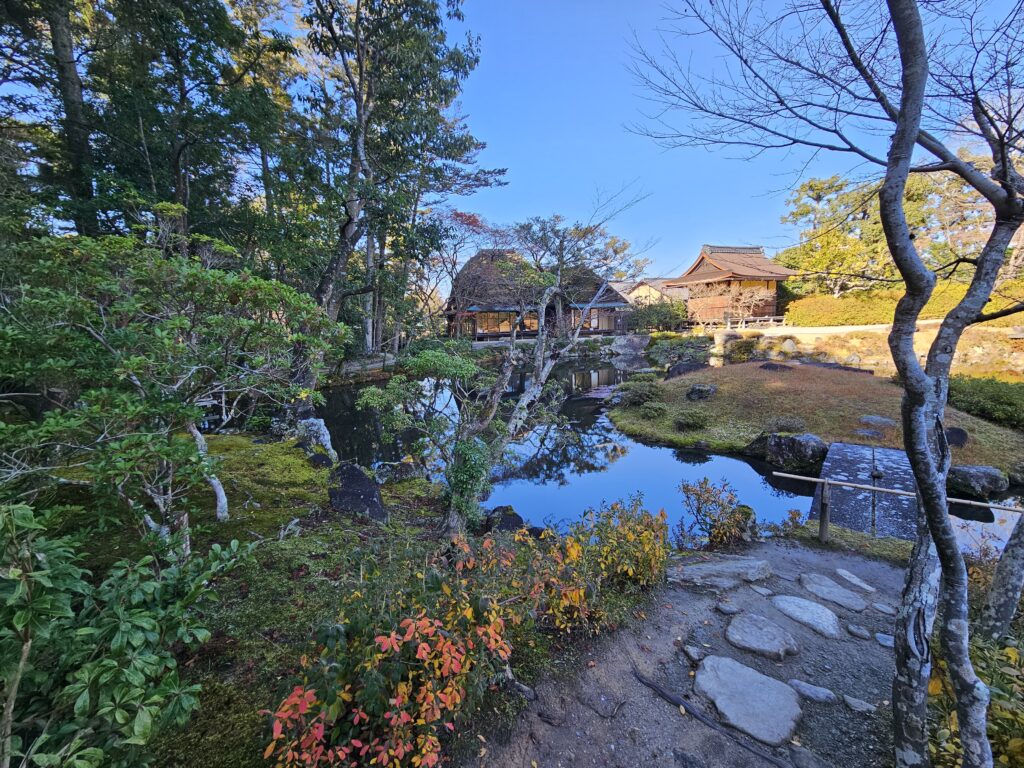
Todai-Ji Temple
The most famous and popular destination of Nara is Todai-Ji Temple (600 yen, $3.81 USD, entrance fee). It’s a UNESCO World Heritage site designated as one of the historic monuments of Ancient Nara. This is a must see during a day trip to Nara.
Constructed in 752, the temple was once one of the Seven Great Temples and wielded great power and influence. Todaiji’s main hall, the Daibutsuden, is one of the world’s largest wooden buildings standing at 57 meters in length.
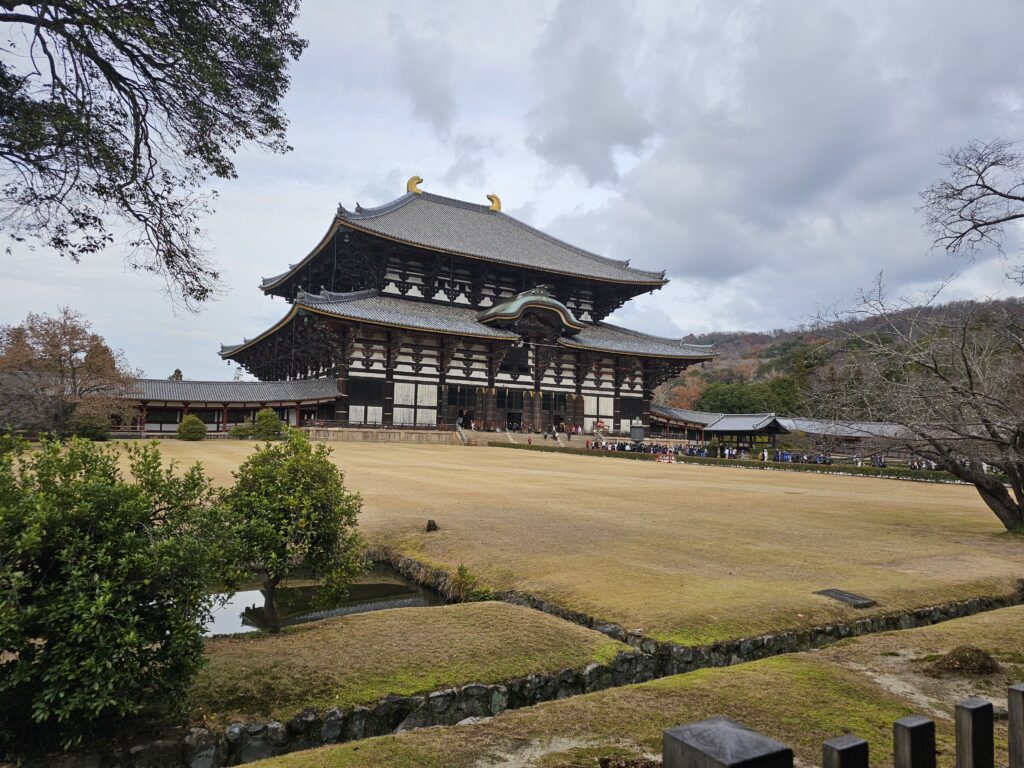
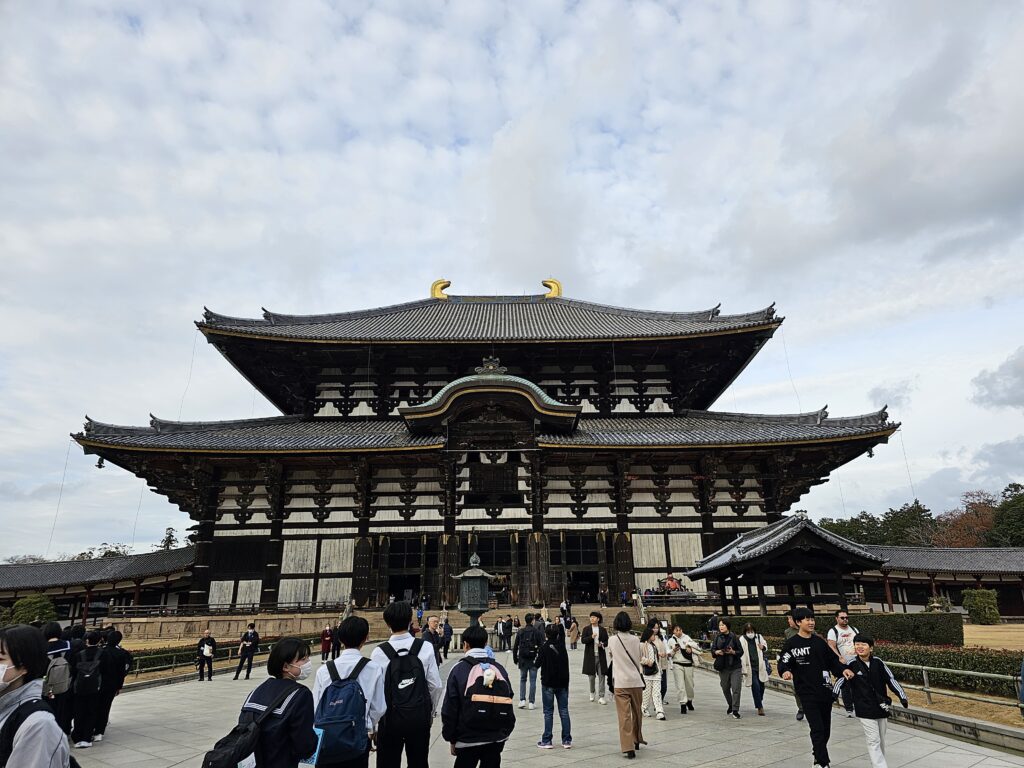
Prior to sustaining fire damage which required the temple to be rebuilt in 1709, the orginal temple once stood at 88 meters in length, so it was actually 30% larger. The building is an impressively massive wooden building as it currently stands, so one can only imagine what it once looked like hundreds of years ago in it’s original size.
Daibutsuden means Big Budda Hall and housed within the main hall is a 15 ft seated Buddha. This enormous bronze statue was created in 752 and is the centerpiece of the temple. It’s the first thing you encounter once entering the temple and is certainly a sight to behold. There are other fantastic statues within the temple as well. Overall, this is a really cool temple, just due to the sheer size, the huge Buddha statue and the other statues within it.
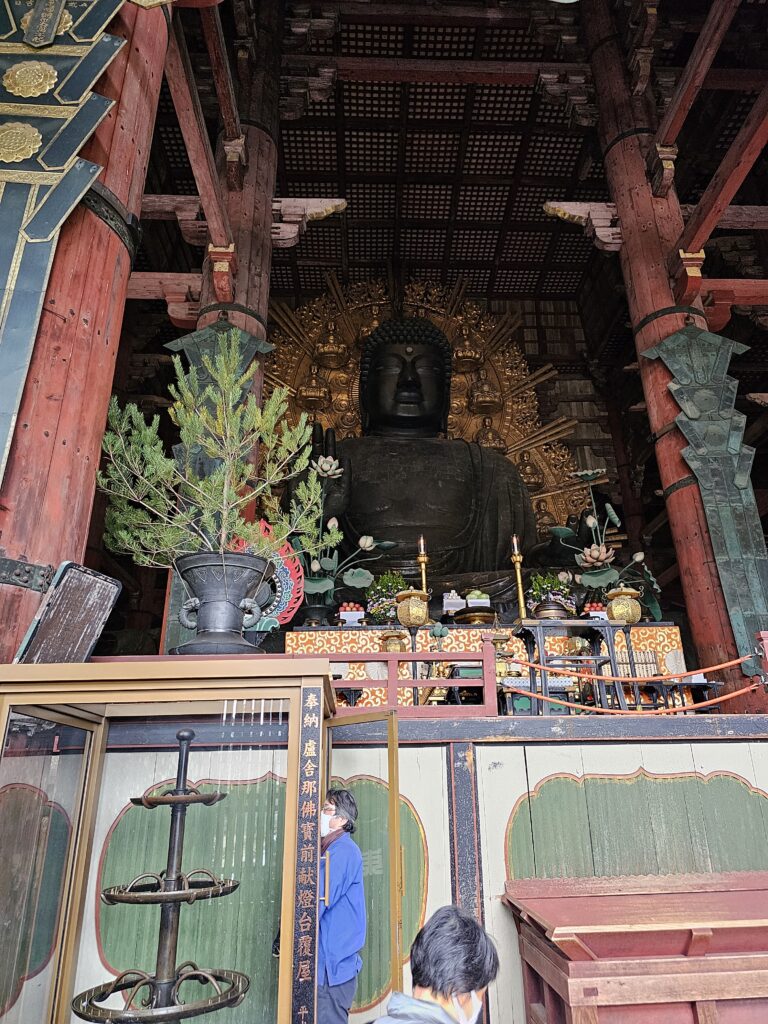
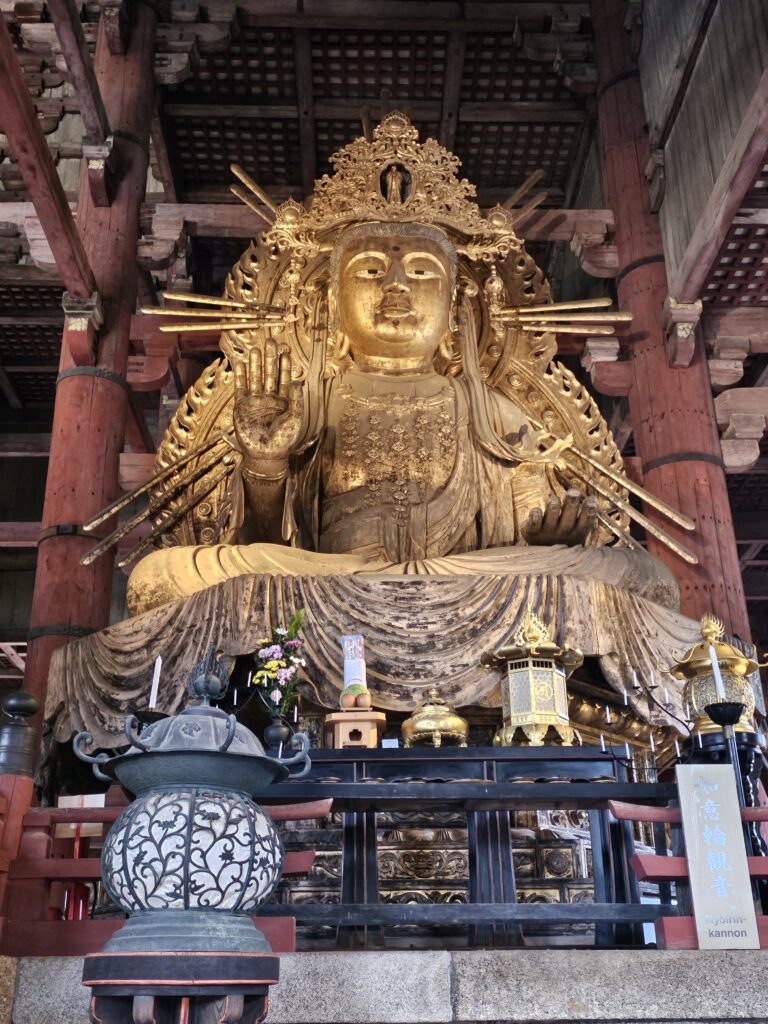
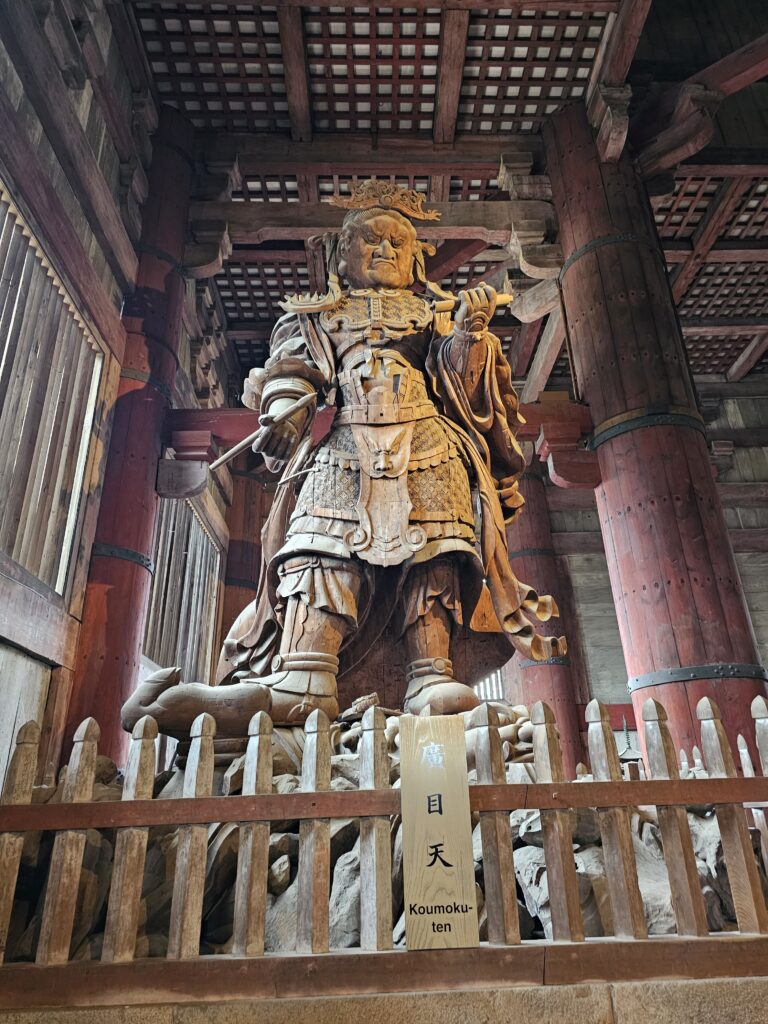
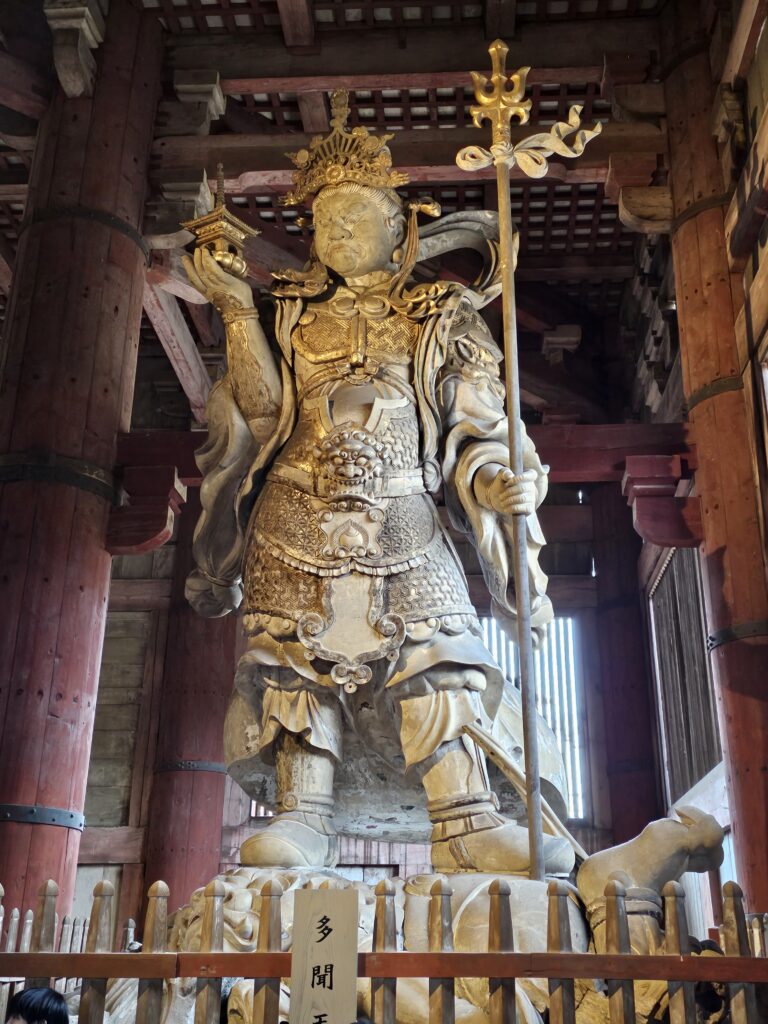
The Todai-Ji area encompasses much more than just the temple. In and around the grounds are several other temples which you can walk to. Some of which may require an entrance fee.
My favorite of these nearby temples was Todaiji Nigatsudo (February Hall). This temple was free and provided a great view of the surrounding area.
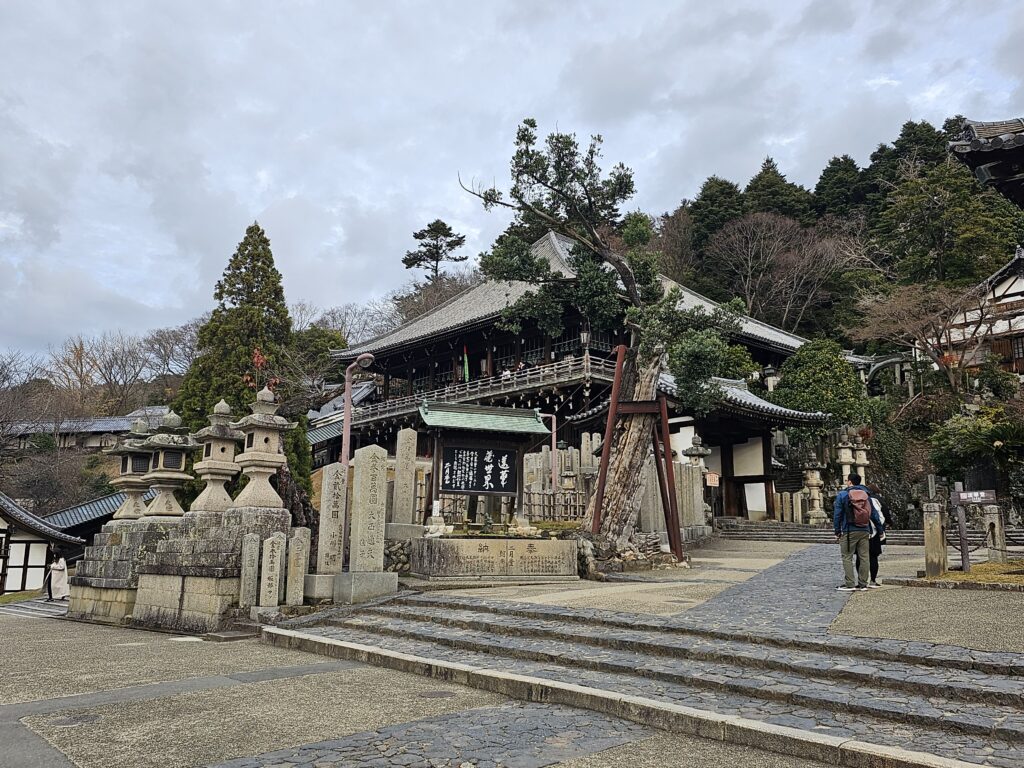
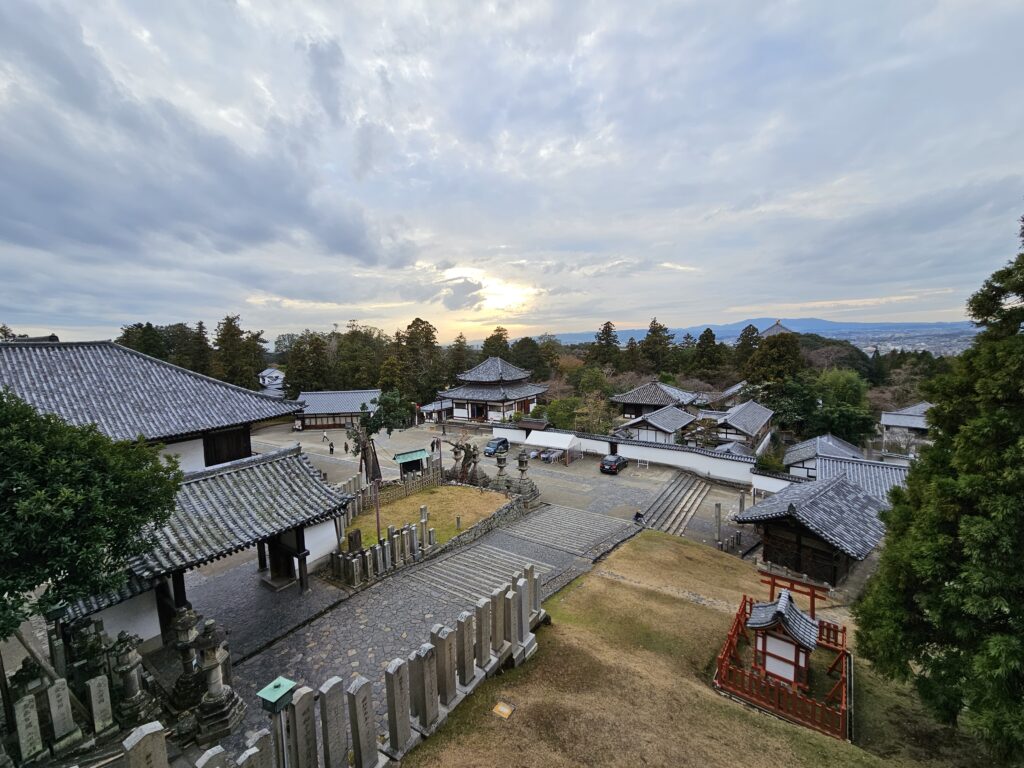
Kasuga Taisha
Another UNESCO World Heritage Site, Kasuga Taisha is Nara’s most famous and sacred shrines. This is another major attraction which should be near the top of a day trip to Nara.
Built in 768, the shrine has been re-built several times over the centuries. It enshrines many gods and deities and the grounds here are quite spectacular and tranquil.
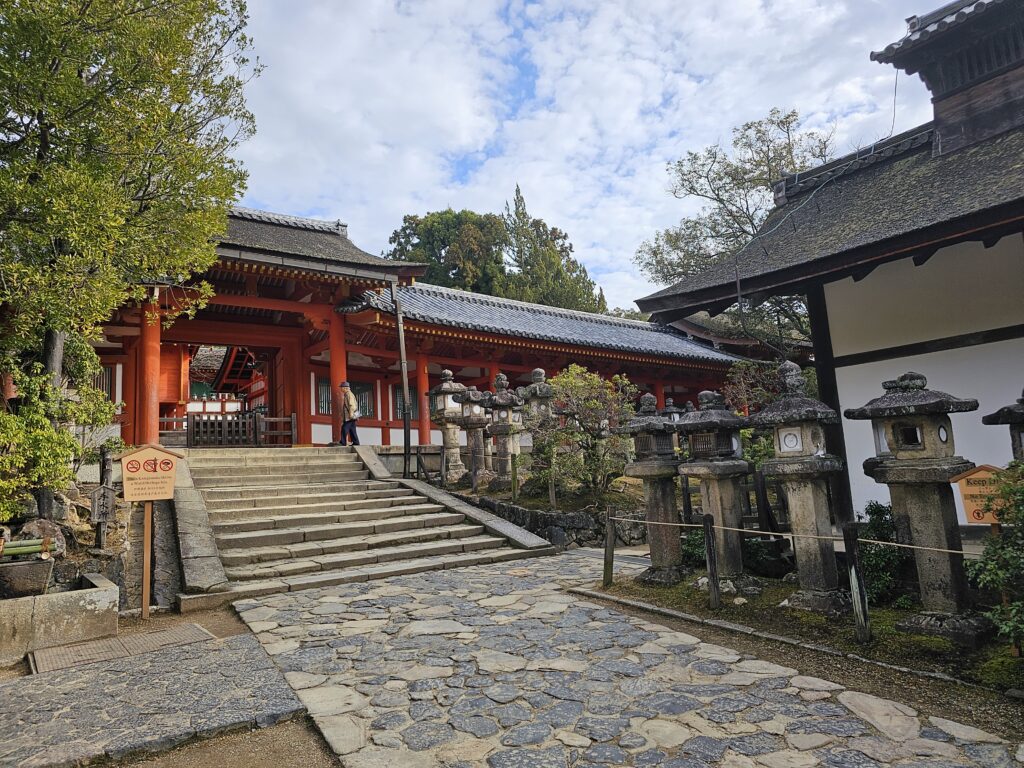
The majority of the area is free to roam around. If you want a look at the shrine’s inner buildings within the offering hall, that will require a fee.
Famous for its lanterns, Kasuga Taisha is home to hundreds of bronze lanterns that can be found hanging from the buildings. There are around 2000 stone lanterns that line the many paths on the grounds as well.
The lanterns are only lit twice a year during two Lantern Festivals, one in early February and one in mid August. One can only imagine what a sight that would be to behold.
Kasuga Taisha is deeper into Nara Park than Todai-Ji Temple and you can easily spend a couple of hours walking around these ground. Deer roam freely in this area as well and are believed to be sacred messengers of the Shinto gods which inhabit the shrine.

Mizuya Chaya
Located near Kasuga Taisha is a cozy little udon restaurant called Mizuya Chaya. This is located right in the park and is a quaint little place with a thatched roof. When I went here there were a lot of people sitting across the road and sketching the building, it’s quite popular.
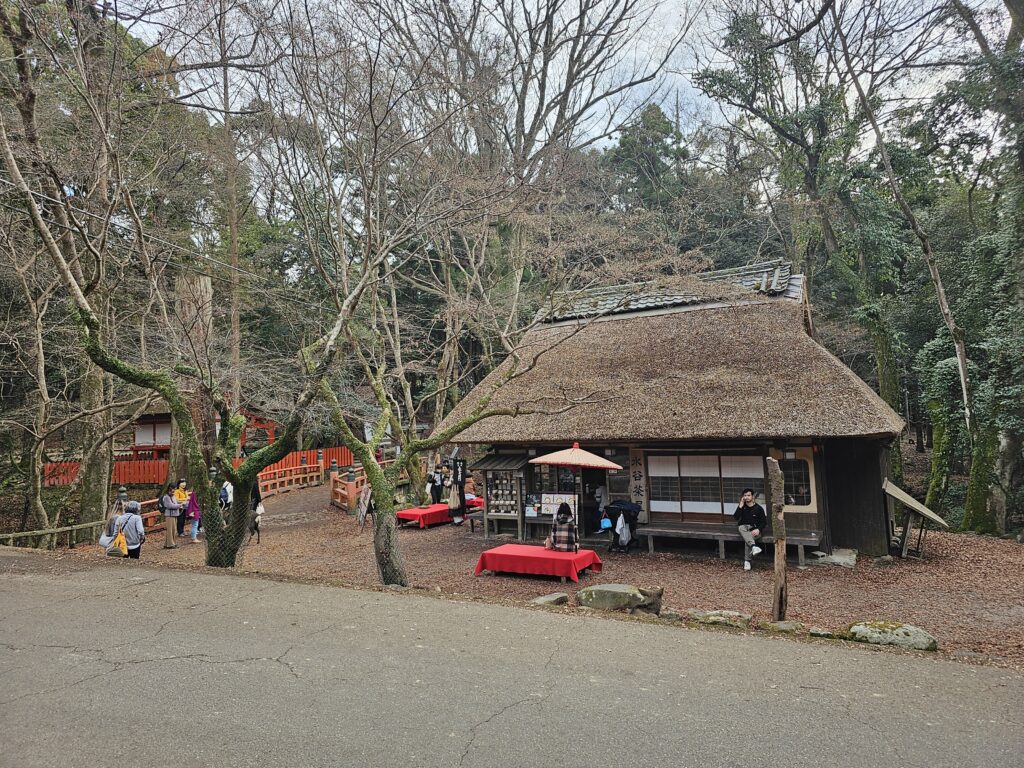
They specialize in udon here and have a few options. Menus are in English so it’s easy to figure out what you want.
I went with the edible wild plants udon (850 yen, $5.39 USD) and also got an iced coffee ( 450 yen, $2.85 yen). The broth had a nice, salty umami taste to it. The noodles were extremely fresh. Great al dente texture, soft and chewy. They were really good! The veggies included green beans, mushrooms, and bamboo. The veggies provided additional textrue and went great with the broth and fresh noodles. This is a perfect stop if you’re heading to or from Kasuga Taisha around lunch time and it’s very affordable!


Enjoy Your Time In Nara
There’s so much to see in Nara Park. Even though I was there for an entire day, I barely scratched the surface. It truly is massive. Fortunately, the major attractions are fairly close to one another and you can walk to them from Nara Station. It will be a heavy day of walking though. There are buses that you can take to the major attractions though if you prefer.
Some of the most enjoyable moments for me were finding pockets in the vast park where there weren’t many people milling around. These are great moments where you can really take in the beauty of the park and appreciate the moment.
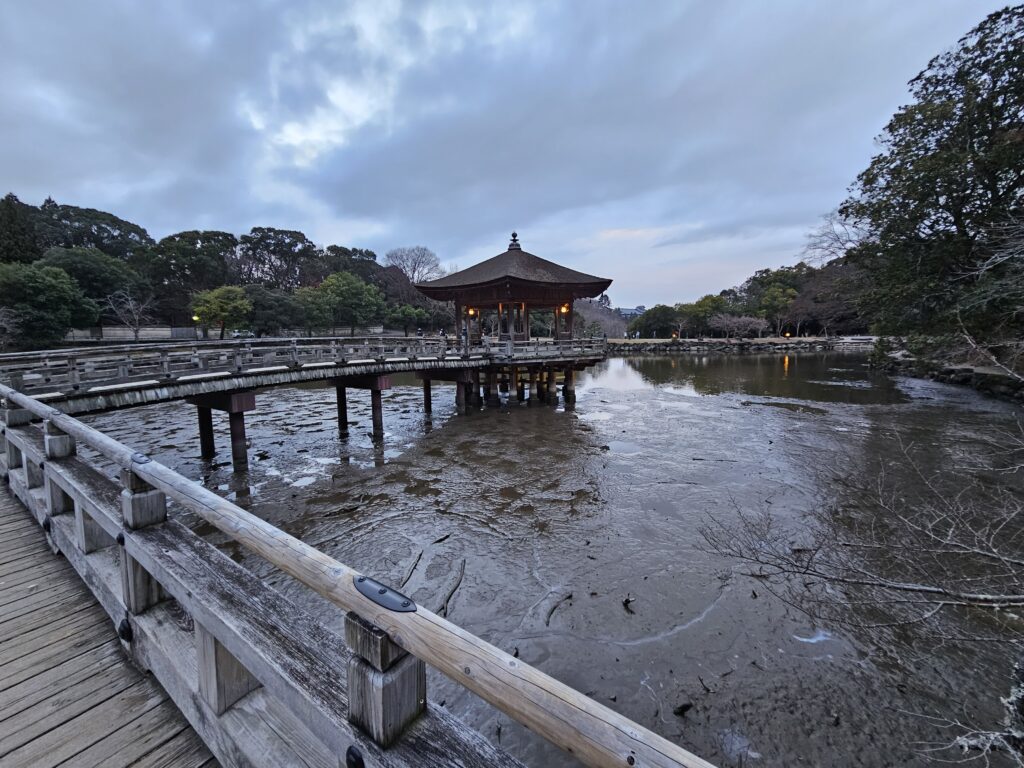

Finally, you have to admire these deer. I mean look how polite they are, they even stand outside of shops, lol.
